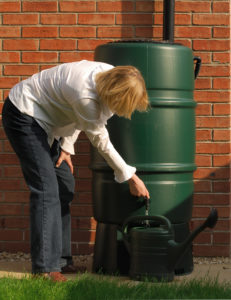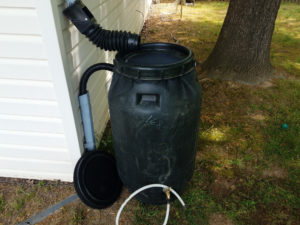Capture Free Water for the Garden with a Rain Barrel
May 21, 2020There’s been an unprecedented interest in gardening since the COVID-19 restrictions were put in place. Seed supply companies and plant nurseries have been struggling to keep up with the demand. “Not in any recorded history have there been sales at these levels, certainly in the last 20 years,” Dave Thompson, director of sales and operations at organic seed company Seeds of Change in Rancho Dominguez, California,” told PEOPLE magazine.

But all those plants need water … and what better way to keep that garden growing than with free rainwater? You’ll be conserving and saving money at the same time! Plus, it can come in handy during a drought.
Rain barrels are a way to collect water that your spouting would otherwise divert away from your house. By diverting a downspout into a barrel (usually a 50-gallon barrel) it can be stored until you need to give the plants a drink. Some people even string multiple barrels together and store a few hundred gallons!

You can buy a fully functional rain barrel, or a kit to build your own, at just about any big-box store, through online retailers such as Amazon, or at hardware stores and garden centers.
But if you’re more of a DIY type, or just want a fun project, they’re easy — and cheap — to make.
To locate an inexpensive (or maybe even free) barrel, take a look on Craigslist, FreeCycle, or contact a beverage manufacturer, animal supply company, food processing company — even some restaurants use them. But be sure to use a barrel that’s 1) made of food-grade plastic and 2) hasn’t been used to store chemicals. While some people use well-rinsed barrels that contained soap or waxes from car washes, experts advise against it.
After you’ve found the barrel, you need to add a spigot, and of course hook it up to your spouting. Again, parts can be found online, or at hardware and big-box stores. Instructions for the next steps can be found in this video from This Old House. (You can even skip attaching a spigot, and buy a small, inexpensive transfer pump or a hand siphon to get the water out instead.)
For more tips and some insider tricks for your rain barrel, click to download this link from the Lebanon County Conservation District.